The RAF has undertaken trials of the BriteCloud missile decoy system on Typhoon jets.
Speaking at the Typhoon Ministerial Meeting in Germany, Defence Minister Stuart Andrew announced the beginning of a series of capability tests of BriteCloud, a drinks-can sized missile decoy to protect combat jets from the latest radar-guided missiles.
BriteCloud is a compact, self-contained radio-frequency (RF) countermeasure system that is launched by a combat aircraft pilot to defeat attacks from radar-guided missiles.
Defence Minister Stuart Andrew said:
“Britecloud offers the RAF a powerful and cost-effective way to keep our pilots safer than ever on the frontline. These trials show UK industry is once again at the heart of defence innovation, providing our Armed Forces with state-of-the-art capabilities and creating high-tech jobs across the country.”
The first Britecould trial with Typhoon aircraft took place in the UK in April. Thirty three BriteCloud 55 rounds were dispensed from aircraft flown by the RAF’s 41 Test and Evaluation Squadron against a range of threats designed to mirror those faced on the battlefield.
The Ministry of Defence say that further trials are planned to ensure the decoy launches safely from the aircraft and to develop a range of operational uses for the technology on the battlefield, including adding the devices to military helicopters and C-130 Hercules aircraft.
The RAF say that Typhoon trials will also inform how such decoys could be used on the Lightning jets.
“Effective against the latest and most-advanced radar-guided threat systems, BriteCloud provides an extra layer of survivability for pilots. By completely separating from its host aircraft and falling away, the decoy improves aircraft survivability by guiding the incoming missile away from the aircraft”, according to Leonardo.
In late 2017, following extensive testing, the MoD approved the BriteCloud 55 (named for its compatibility with 55mm flare dispensers such as those on Tornado, Typhoon and Gripen aircraft) for operations and production.
Sir Simon Bollom, CEO of the MOD’s Defence Equipment and Support organisation, said:
“Our ongoing partnership with Leonardo continues to drive vital research and development that leads to the kind of innovation demanded by our RAF today. The trials of BriteCloud on Typhoon demonstrates how we are constantly striving to find a technological edge and protect our service personnel.”


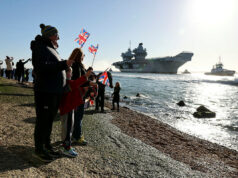

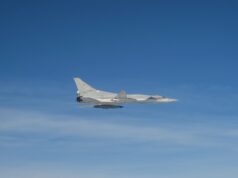
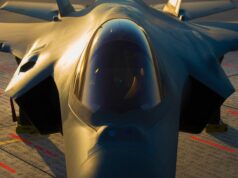
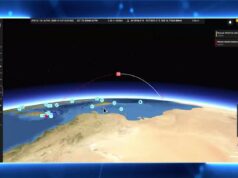
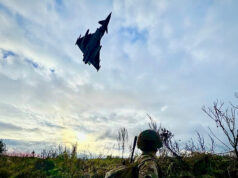
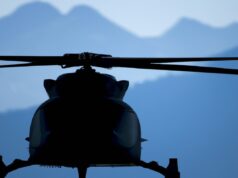
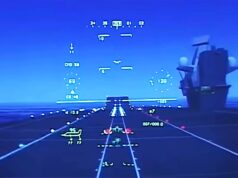
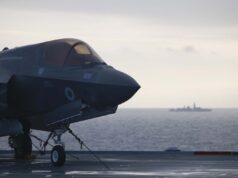


Perfect! Now let’s get a few additional squadrons of Typhoons and get moving with Tempest double quick time. The best solution for the RAF and RN, if we decide to build a navalised version of Tempest of course!
Making progress with EMALS too.
https://www.youtube.com/watch?v=6qahWEhrDfg
Sweden are in high level talks with the UK to be a full partner in the Tempest program according to “Janes”, so that’s us, Italy and now Sweden. If all three countries are looking at a joint partnership, much like the Typhoon consortium then perhaps this aircraft will actually come to fruition. I’m not sure Japan will join, as they are being wined and dined by Lockheed-Martin with F35 technology offsets.
One of the benefits of having Sweden join the party, is that they will insist that the aircraft can be deployed to austere road sites and thus require short take off and landing. If that’s the case, the aircraft would be more than capable of landing on a smallish deck (with additional undercarriage strengthening). Sweden will also bring their expertise in EW which is very formidable.
The US Navy are looking at going it alone, as they believe the USAF future aircraft project doesn’t meet their requirements for the F18 replacement. So perhaps there could be bit of a tie in with them as well?
I mentioned some time ago that a tie in with Sweeden would be a sensible move. Joint development of Peruses and the purchase of the Naval Strike Missile seem to go hand in hand? Personally, I’ve never trusted the French!
Taranis/Magma could be another useful program that they might be interested in co-developing with us?
Sweden is not one of the constituent parts of MBDA.
Perseus was a concept. FCASW is the programme as is a joint programme with France.
Sweden is a user of KEPD-350
France and UK use Storm Shadow/SCALP.
Naval Strike Missile is Norwegian…Sweden would never buy as they make the RBS-15.
In short Sweden isn’t really involved…
Thank you for the correction and update, I couldn’t remember if it was Norway or Sweden at the time of posting.
The manning shortage problem needs to be sorted first by the MoD, before more Typhoons are procured!
Not enough Crews!
Interesting that they are considering Britecloud for use on Lightning too,but a positive for Typhoon,anything that would make them more survivable in combat must be a good thing.
How does this system improve on the current chaff flare dispensers?
It’s a quantum leap. Chaff is usually glass fibre strands covered in aluminium, cut to about a 1/4 wavelength of the expected threat radar’s frequency. You can tailor them more specifically to known radars, but there’s always a chance some unexpected one will show up, so a broader spectrum is generally used. Chaff works by camouflaging the aircraft behind a massive reflective cloud. Depending on how well the chaff “blooms” you can have greater than 90% reflection.
The problem with chaff for aircraft is all to do with its lack of velocity moving through the air i.e. as soon as its fired its acceleration decays very rapidly. This makes it easier for modern pulse-doppler radars, such as Captor, to use moving target algorithms to effectively cancel out the chaff. It compares the speed of the original target with the near static chaff target and negates the decoy.
This is why towed decoys have become the latest fashion. The towed decoy comes in either passive or active variants. The passive one uses a series of corner reflectors whilst the active one will try to mimic the threat radar to generate a false image of the aircraft. The idea is that the towed decoy is now moving at the same speed and direction as the targeted aircraft, so becomes the primary target. The problem is that again with the development of ever better algorithms and multi-frequency AESA radars. The AESA radar can now discriminate between the two and using a form of AI will chose to attack the leading target.
This is where Britecloud comes in. For starters its a Digital Radio Frequency Memory (DRFM) jammer. The technology has been around for at least 10 years, but it’s only recently were it has been able to be miniaturised so that it can fit in a standard 55mm chaff/flare dispenser. The actual size is about the same as Red Bull can. Rather than just acting as chaff or like the passive towed decoy. It generates very accurate false images to the threat radar. When fired these will initially be travelling near the same speed as the aircraft and has a much slower deceleration rate, but more importantly because its actively transmitting a ghost image, it does a much better job at camouflaging the targeted aircraft.
Britecloud may not be in the same league as the jamming capability of a F18 Growler. But the technology it uses is the same, but on a more local scale. It takes a direct copy of the received radar signal and digitises it. It then manipulates it by either changing its phase or amplitude. This is then re-transmitted. Therefore the returning signal can be made to be smaller, larger, with a phase change or with multiple transmissions. This is designed to mess with the threat radar by either making it think it is further away, closer, has a larger RCS, is off on a different bearing or is now multiple targets. It also has the capability of just generating white noise to blanket that part of the RF spectrum.
The Britecloud will give the targeted aircraft a much better chance of getting away against more modern AESA radars and radar guided missiles (active or semi-active). It could be used as a local jammer against older pulse-doppler and Continuous Wave radar and it will seriously mess with PESA radars (as they don’t have the same frequency hopping ability as AESA). I am not surprised that Britecloud is earmarked for F35s, for aircraft like Typhoon it will be essential. For F35s not only can it be used defensively but also offensively due to the aircraft’s really small radar cross section, adding another string to its bow.
As usual, a great reply. I am now informed. Something so cheap as defence goes yet such a leap.
I’m impressed, by something the size of a Red Bull can…
Thank you.
I have a suspicion that BriteCloud will be the EW component inside the Spear-EW. Same system but with massive batteries/cells.
Hi there. Would you deploy Britecloud 55 alongside an updated towed decoy or would it replace it entirely ? (in which case, what could we do with the freed-up space)
Are you working for the Typhoon project team?
As I’ve said earlier in some circumstances the towed decoy could still perform better than the Britecloud. In that the the towed decoy follows the aircraft at the same speed and direction, so will faithfully mimic the aircraft. However, with the evolution of Moving Target Indication algorithms, there is a very good possibility that when combined with AI the radar guided missile will attack the lead target and not the trailing. Not heard of a decoy that can be deployed in front of the aircraft mimicking the aircraft’s actions!
The Britecloud is designed to be fired away or behind from the targeted aircraft and present a better target for the missile. It will initially be travelling at a similar velocity, but in a different direction. Therefore, forcing the missile to make a choice over which target to track. As far as I know the Britecloud is not manoeuvrable (yet) so will follow a ballistic trajectory and at some point the velocity will degrade making it easier to discriminate between the targeted aircraft and the decoy. But we are talking an engagement taking seconds not minutes, so will the Briteclould’s speed degrade quickly enough to matter, not sure.
If we are looking at a Russian made missile attacking a Typhoon such as the AA-12 Adder, which is supposed to have a similar performance as the AMRAAM. Significantly, it is a larger missile, this is probably due to electronics it uses which are generally a generation behind the West, thus requiring more space to do the same function.
The Typhoon will first be illuminated by the opponents radar long enough to generate a firing solution. The missile is fired and if its over 15-20km the missile will stay passive. Therefore, the opponent will need to intermittently illuminate the Typhoon to give the missile mid-course adjustments. So the Typhoon could at this point fire-off a Britecloud to generate a false image and bug out. However, if the Adder gets within 15-20km, it will go active. Currently, it uses a normal narrow field of view mechanically gimballed pulse doppler radar, which can easily be fooled by either the towed decoy or Britecloud. It will be updated with a AESA radar in the near future. So if it’s clever enough to discriminate between the towed decoy and the Typhoon (doubtful), the Typhoon will be in trouble. The Britecloud should be able to shield it (decoy it), as it can really mess with narrow field of view radars. Unlike the Captor-E that uses a small gimbal to enhance the AESA’s field of view. Fixed AESAs have a field of view of +/- 60 degrees in both vertical and horizontal planes. The Briteclould can either mimic what the Adder expects to see as it closes with the Typhoon or it can jam/spoof it (it’s multifunctional), thus allowing the Typhoon to escape.
The problem is EW never stays still, the Adder is also being updated with dual seekers which combines a AESA radar and a IR Senor. Therefore, to keep pace the Britecloud also needs updating, by including a wideband IR source.
If the towed decoy is removed in favour of the Britecloud. It would make sense to fit the space with an active jammer based on the DRFM technology of the Britecloud.
No 🙂 Just an interested enthusiast. However, reading this:
“It generates very accurate false images to the threat radar. When fired these will initially be traveling near the same speed as the aircraft and has a much slower deceleration rate, but more importantly because its actively transmitting a ghost image, it does a much better job at camouflaging the targeted aircraft.”
It struck me that the towed decoy could be doing something very similar, but the ghost image is traveling with the aircraft rather than dropping away from it. Given machine learning analysis, it ought to be possible for the AESA radar/computer to distinguish between falling Britecloud unit and the primary source as easily as for the towed array given enough time.
Presumably a really clever system on a Typhoon would use both. Something like a towed decoy until detected and then switch it off whilst taking avoiding manoeuvers to break lock, whilst deploying the Britecloud decoy ?
The problem with the missile, even if they eventually have dual heads, is the small angular diameter angle of the radar cone radiating from the missile when the Typhoon tries to break radar lock. I guess you’d also want a suite of missile detectors on the Typhoon for the computer to determine the right point to manoeuver and deploy britecloud (and flares).
The Aircraft to Missile communication frequency ought to be jammed as well (a second different decoy unit) ? Ultimately should we be deploying our own version of the Growler as well ?
The beauty of the digital radio frequency memory that Britecloud uses, is that it will record and digitise an exact copy of the threat radar be it from an aircraft or missile. By messing about with the timing and rebroadcasting it, you can fool the aircraft/missile’s radar into thinking that the target is much closer or further away etc. Then by altering the phase of the broadcast you paint a false image of where the target is. This all helps to camoflague the real target, allowing it a greater chance to escape.
It is highly feasible to use the Britecloud as a towed decoy. By having it powered directly from the aircraft would increase the protective bubble around the aircraft. However, once the missile has impacted with it, which will likely destroy it, you may have run out of the ability to have towed decoys. This is where the advantage of firing the Britecloud from a standard 55mm dispenser comes in, where you could have at least 16 ready rounds found in the rear of the pylons thereby giving you more chances to evade the missile.
The Britecloud’s DRFM is multifunctional and has a very wide bandwidth. It could be used to jam the missile’s data-link. I’m not sure how much it can do at once though.
Having a Growler type aircraft is definetly a mission multiplier. It also uses DRFM technology, but on a much larger scale and has a much more effective jamming/spoofing range. It can jam both radars and communications though. Its a shame we couldn’t convert a number of twin seat Typhoons to this role.
Fascinating. Thanks. If you have the right passive sensors on the plane, presumably you could switch on/off the Towed Brightcloud to avoid its destruction ? I think you would want to have both options available in practice as it would give more flexibility.
Is there a reason why we wouldn’t convert a Typhoon into a growler (other than cash ?). If the electronics are automated presumably even a one seat version might be possible (eventually).